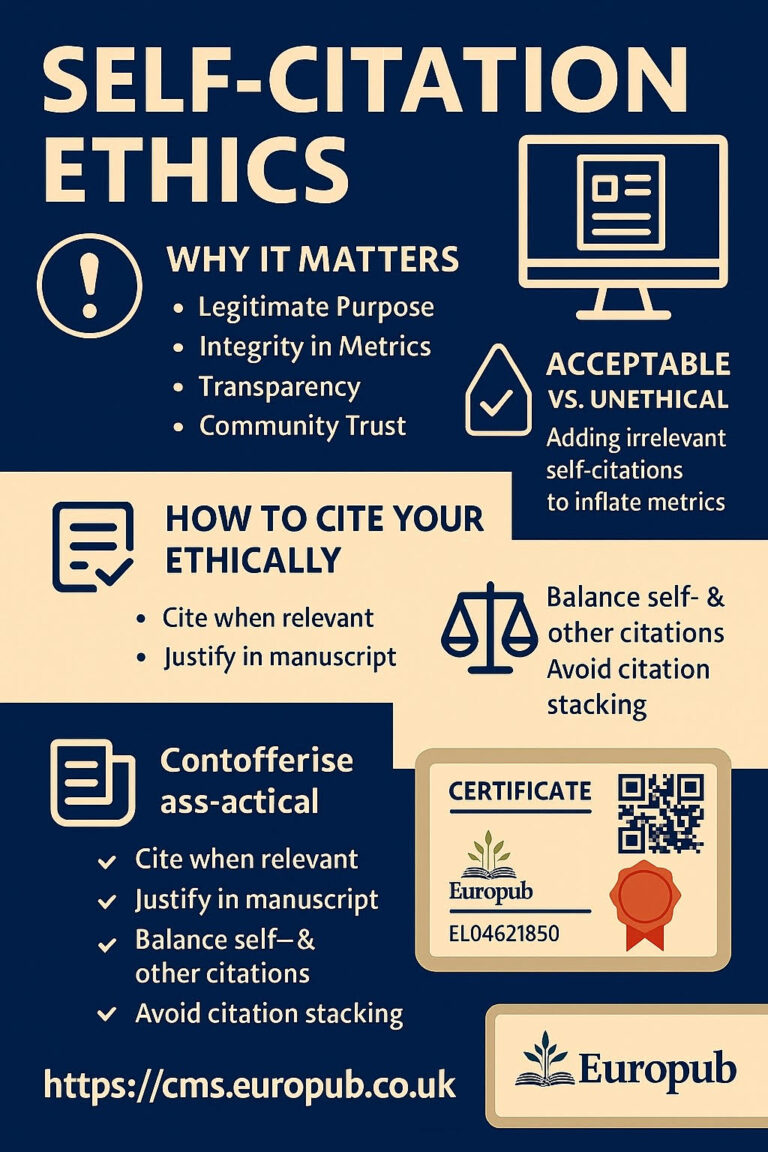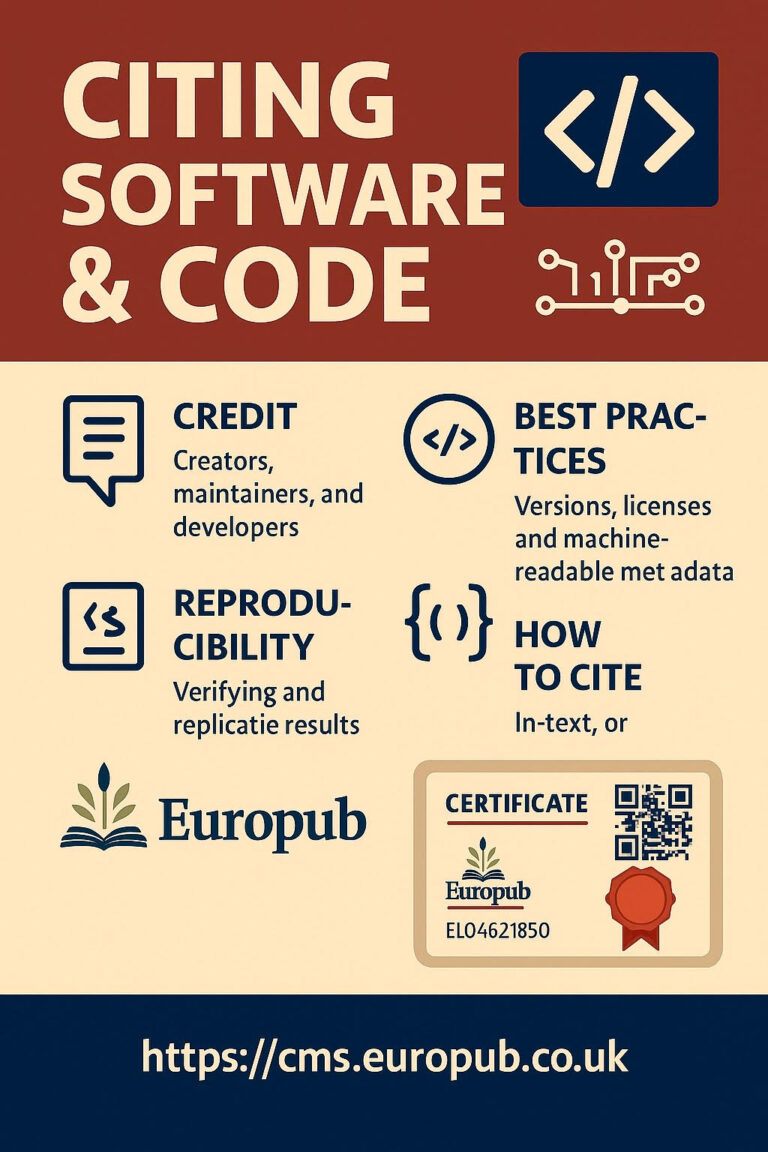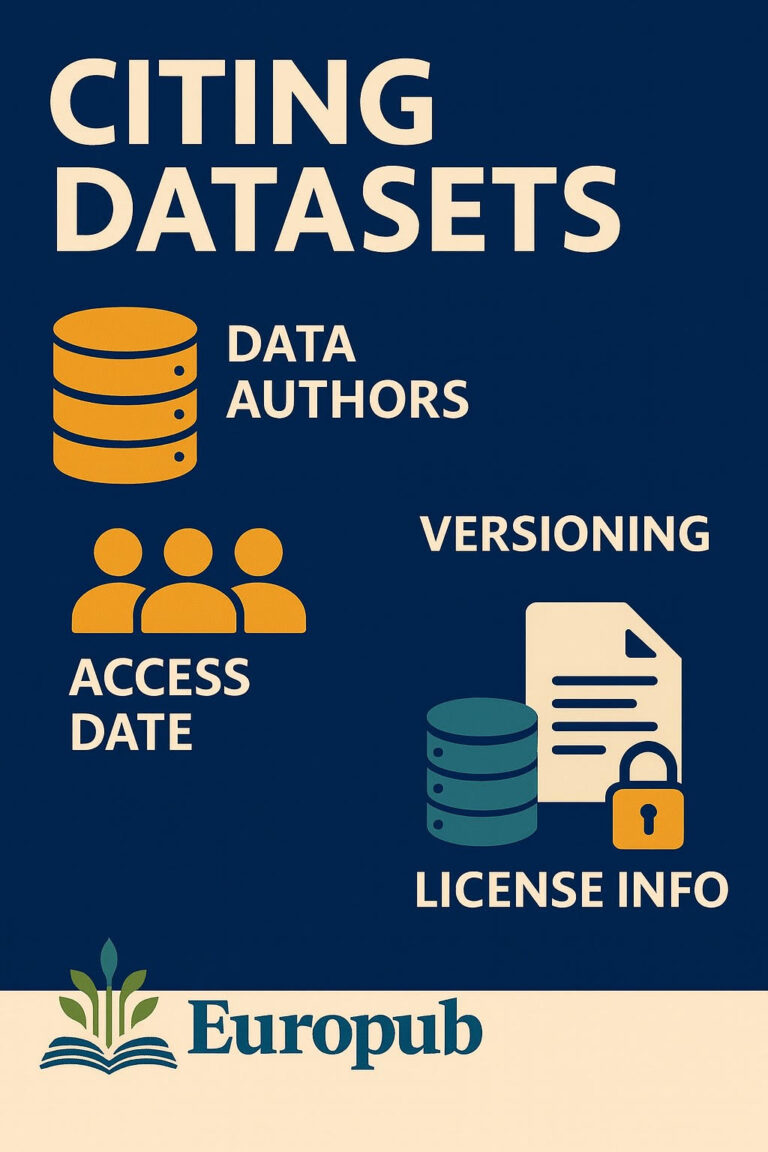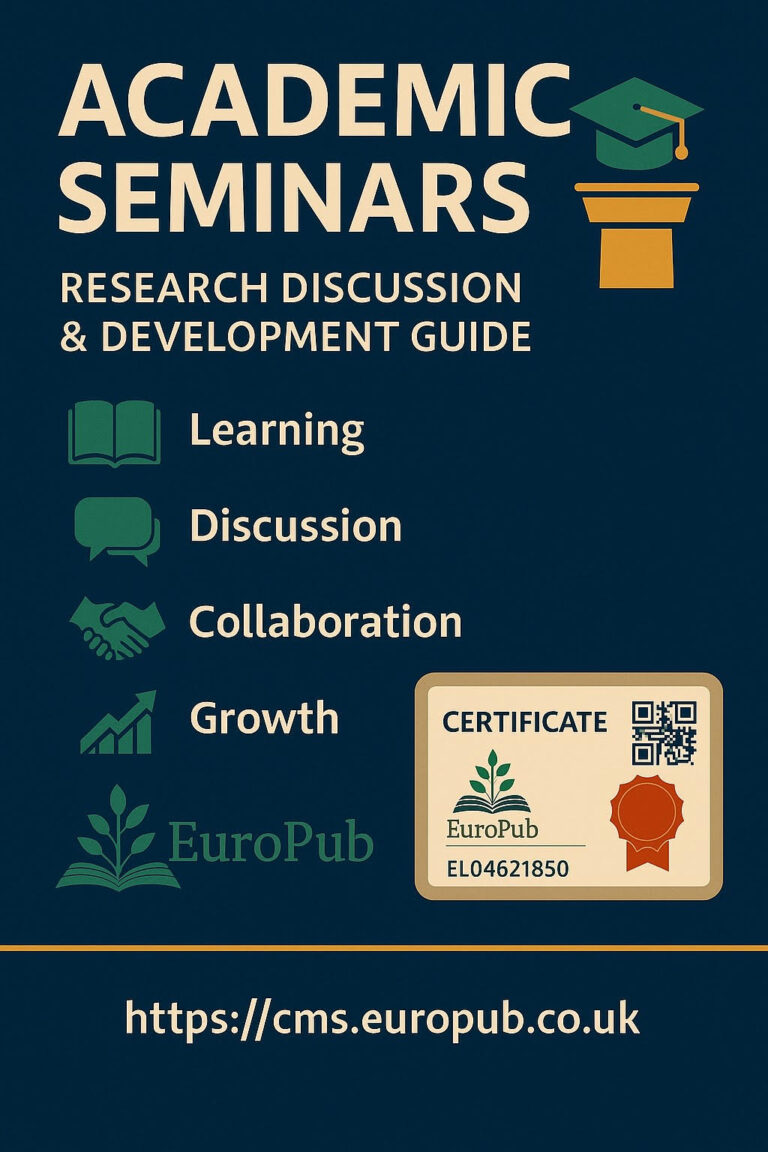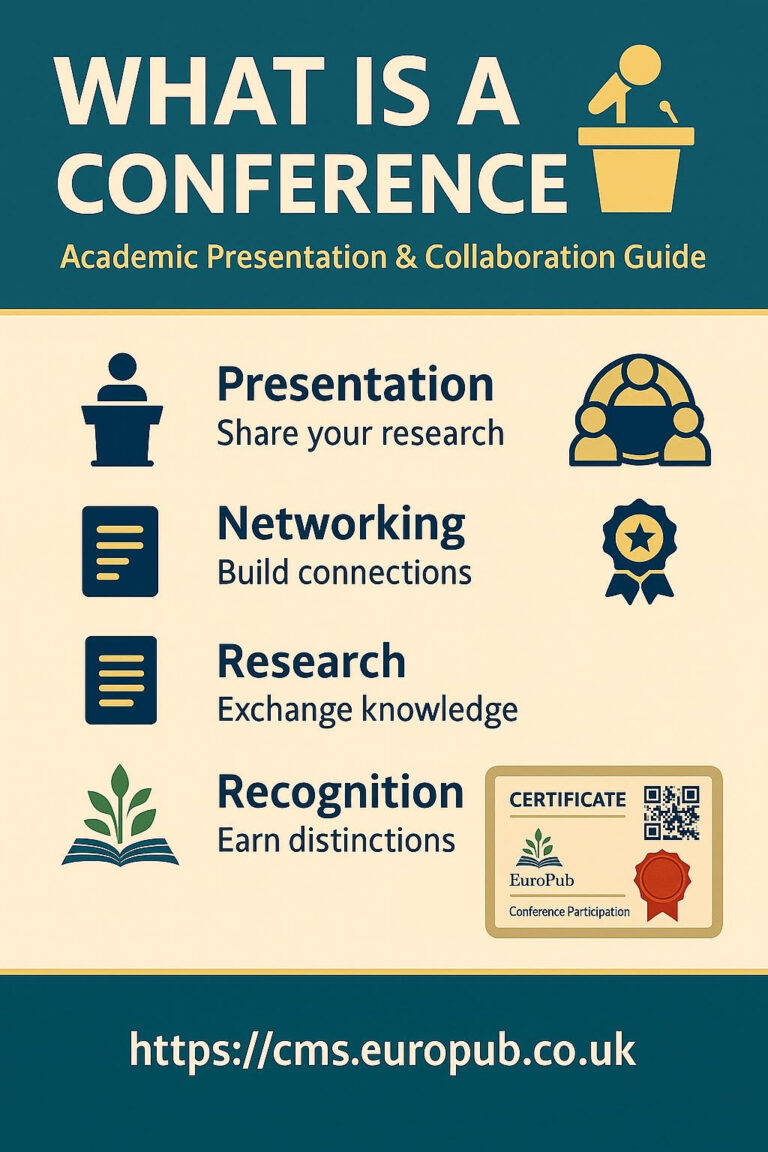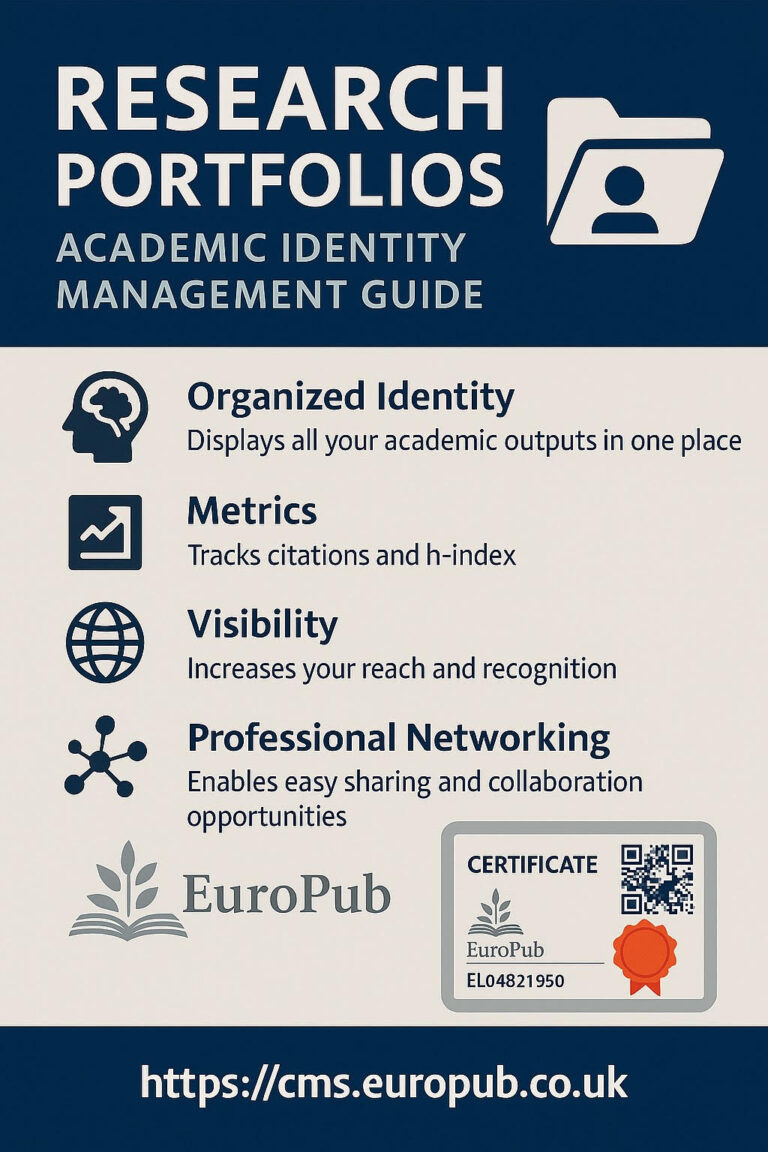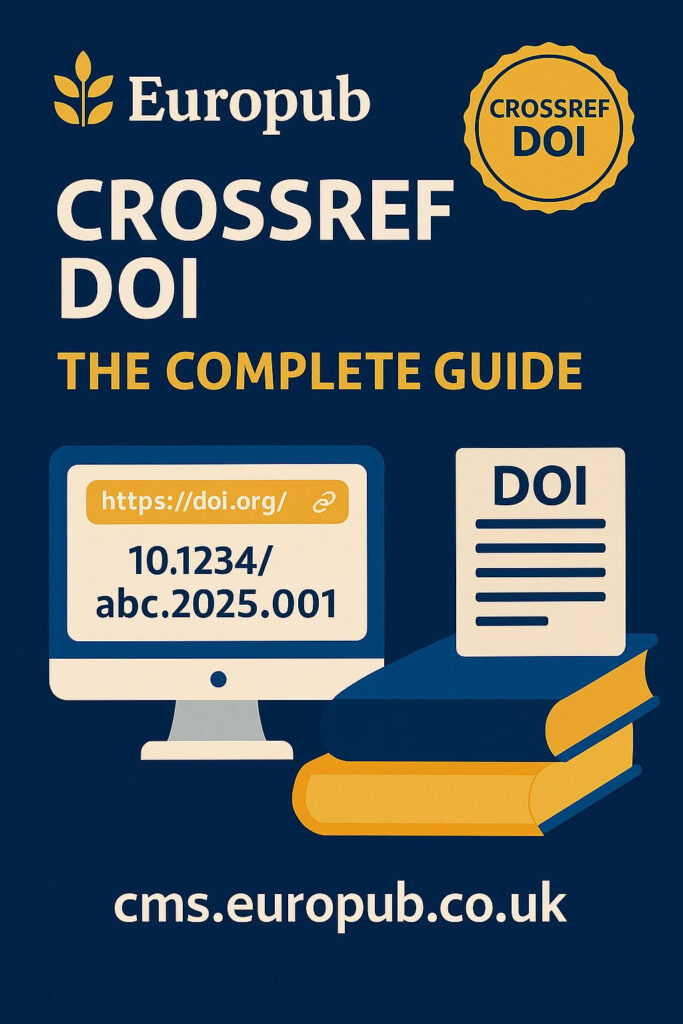
 What is a DOI?
What is a DOI?
A Digital Object Identifier (DOI) is a unique alphanumeric string assigned to a digital publication — such as a journal article, book chapter, dataset, or conference paper — that provides a persistent link to its online location.
Unlike a standard URL, which can change over time, a DOI remains permanent, ensuring that readers and indexing services can always access the item.
 About CrossRef
About CrossRef
CrossRef is a not-for-profit, official DOI registration agency recognized by the International DOI Foundation (IDF).
It provides digital infrastructure that enables:
- Cross-linking between articles, books, and datasets
- Citation verification
- Metadata indexing across platforms such as Scopus, Web of Science, Google Scholar, and PubMed
Website: https://www.crossref.org
 Why DOIs Matter
Why DOIs Matter
- Permanence: Guarantees stable access even if the publisher’s website changes.
- Visibility: Enhances discoverability in databases and search engines.
- Citation Linking: Enables clickable references and cross-publisher citation tracking.
- Indexing: Required by Scopus, Web of Science, DOAJ, and most major databases.
- Credibility: Signals professionalism and trustworthiness of the journal or publisher.
 Structure of a DOI
Structure of a DOI
Example:
10.1234/abc.2025.001
Explanation:
- Prefix (10.1234): Assigned by CrossRef to a specific publisher or organization.
- Suffix (abc.2025.001): Assigned by the publisher to identify each article uniquely.
 How Publishers Obtain DOIs
How Publishers Obtain DOIs
- Register as a CrossRef memberVisit https://www.crossref.org/membershipand complete the publisher membership process.
- Pay annual membership & deposit fees.
- Use CrossRef tools (like Simple Text Query, Metadata Manager, or API Uploads) to register articles.
- Deposit metadata: Include authors, title, journal name, volume, issue, pages, and URLs.
- Confirm and verify assigned DOIs.
 Integrating DOI in Articles
Integrating DOI in Articles
Each DOI must:
- Be placed on the first page of the article PDF (preferably under the title).
- Be clickable: https://doi.org/[DOI_number]
- Match the metadata exactly as deposited in CrossRef.
 DOI Management Best Practices
DOI Management Best Practices
- Keep URLs updated in CrossRef’s database.
- Ensure metadata quality (author names, ORCID, references).
- Check for broken links regularly.
- Always assign DOIs before indexing or archiving in Scopus or Web of Science.
 CrossRef Tools and Integrations
CrossRef Tools and Integrations
| Tool | Description | Link |
|---|---|---|
| Metadata Manager | Web-based interface to register and edit DOIs. | https://www.crossref.org/tools/metadata-manager |
| Simple Text Query | Tool for finding DOIs for references. | https://www.crossref.org/simple-text-query |
| REST API | For automated DOI registration and retrieval. | https://api.crossref.org |
| Crossmark | Service to show article updates or retractions. | https://www.crossref.org/services/crossmark |
 CrossRef and Europub
CrossRef and Europub
Europub integrates DOI registration via CrossRef for all indexed journals and certificates through
Each certificate or journal article receives a DOI connected to its Europub verification page, improving traceability and global citation access.
 Common Errors in DOI Handling
Common Errors in DOI Handling
- Wrong or outdated URLs
- Missing metadata fields (author ORCID, ISSN, publication date)
- Duplicate DOIs for one article
- Unregistered DOIs used in PDFs before approval
 Frequently Asked Questions (FAQ)
Frequently Asked Questions (FAQ)
Q1. Who can assign a DOI?
A: Only official CrossRef members or their authorized registration agents.
Q2. Is DOI registration free?
A: No, publishers pay annual membership and per-item fees. However, many platforms (like Europub) offer DOI issuance as part of publication services.
Q3. Can a DOI be changed later?
A: No, DOIs are permanent. Only the linked URL or metadata can be updated.
Q4. How can I find a DOI for a published paper?
A: Use the CrossRef search tool.
Q5. What if a journal doesn’t provide a DOI?
A: You can still cite using its URL, but it will reduce discoverability and credibility.
Q6. Are DOIs required for conference proceedings?
A: Yes, most indexing services (like Scopus) require DOIs for proceedings and papers.
Q7. Can DOIs be assigned to non-English publications?
A: Yes, CrossRef accepts metadata in multiple languages.
Q8. How does a DOI help in citation tracking?
A: All citations referencing a DOI are automatically linked across publishers.
Q9. What happens if a publisher stops working with CrossRef?
A: The DOIs remain active as long as they are hosted under the registered prefix.
Q10. How long does DOI registration take?
A: Typically 1–3 business days once metadata is properly submitted.
Q11. Can books and theses have DOIs?
A: Yes, CrossRef allows registration of monographs, edited volumes, chapters, and dissertations.
Q12. Is DOI mandatory for journal indexing in Scopus or Web of Science?
A: Practically yes — absence of DOI reduces the chance of indexing approval.
Q13. What’s the difference between DOI and URL?
A: DOI is a permanent identifier; URLs can break or change over time.
Q14. What is Crossmark?
A: A CrossRef service that informs readers if an article has been updated, corrected, or retracted.
Q15. How do DOIs link with ORCID IDs?
A: CrossRef metadata includes author ORCIDs, linking publications to researchers’ profiles automatically.
Q16. Can a DOI link be included in printed versions?
A: Yes, it’s common practice — include https://doi.org/xxxx below the article title.
Q17. Can a publisher have multiple prefixes?
A: Large organizations often maintain multiple prefixes for different divisions.
Q18. Can DOIs be deleted?
A: No, they are permanent identifiers. Deleting or reassigning them is against CrossRef policy.
Q19. What is a DOI resolver?
A: It is a system (like https://doi.org) that redirects DOI queries to their correct URLs.
Q20. How can researchers verify if a DOI is valid?
A: Enter it in https://doi.org — valid DOIs will redirect to the publication.
